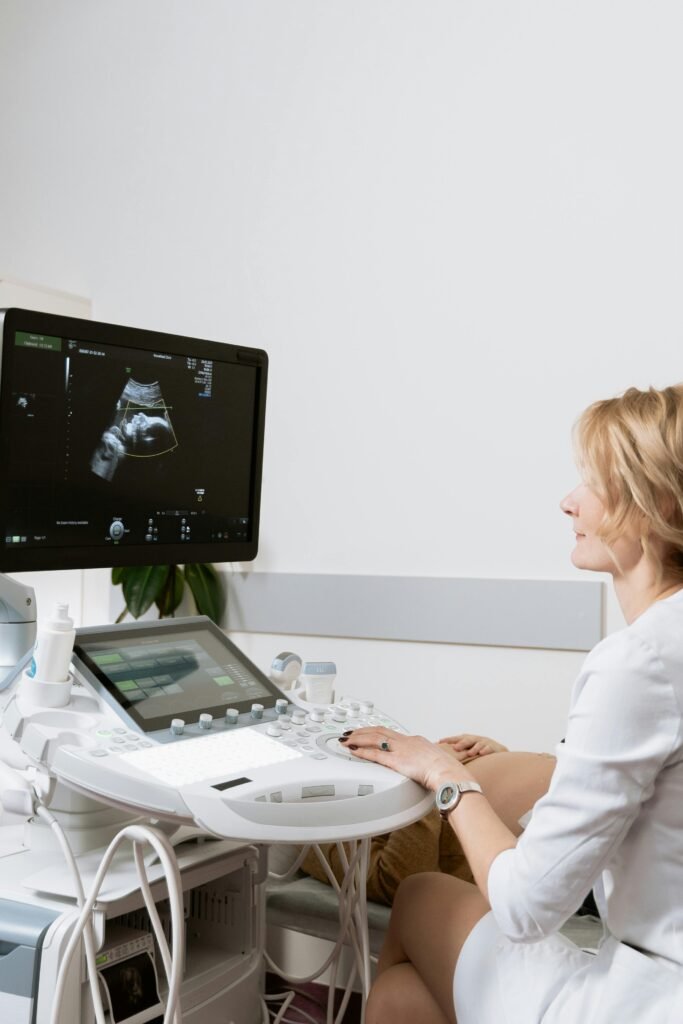
Modern scan technology Electromagnetic Detection ( EDE ) scanner, has been produced as an aid in combating COVID-19. Hospitals were heavily used in the United Arab Emirates (UAE), especially in Abu Dhabi, where it was involved in the screening of persons during the time of the pandemic. EDE scanners were developed as an alternative, quick, non-invasive procedure to detect the COVID-19 virus in individuals to limit the scope of the virus spread and to limit the severity thereof.
In this blog, I will tell you what is EDE Scanner is. and the benefits, disadvantages, and the importance of such a tool during the COVID-19 crisis. Investigating this technology will enable you to realize how the new approaches, such as the EDE scanner, can influence the future of health diagnostics.
Key Features of EDE Scanners
- Non-invasive: There is no physical contact or sample which is required.
- Quick results: The output can be obtained in a few seconds.
- Large-scale screening: This is suitable where there is a large number of people to be screened, in places like airports or mass gatherings.
The EDE scanner proved to be an excellent addition to the set of instruments employed in halting the spread of COVID-19, with the given advantages. Nonetheless, this came with its limitations and areas that needed to be enhanced, as is characteristic of all new technology.

How Does the EDE Scanner Work?
EDE scanner is based on the innovative electromagnetic technology that helps pick up molecular changes in the body that are brought forth by the COVID-19 virus. Contrary to older diagnostic tests, such as the PCR (polymerase chain reaction) test, which requires the nasal/throat swab, EDE scanners present a non-invasive variation that may allow quick results.
Electromagnetic Waves
The main principle of the operation of the EDE scanner is the possibility of measuring electromagnetic waves. The human body spontaneously releases these waves. Ordinarily, the electromagnetic waves possess some frequency; however, when a person is infected with COVID-19, the existence of virus molecules, namely RNA (ribonucleic acid) of the virus, can change the nature of the electromagnetic waves.
How Electromagnetic Waves are Affected:
- Molecular interaction: The COVID-19 virus holds RNA molecules that respond to the electromagnetic fields around the human body.
- Change in frequency: These molecules are also detectable when in the presence of such molecules, the level of electromagnetic waves emitted by the individual also changes.
- Detection mechanism: These delicate changes can be detected by the EDE scanner and which uses this to determine whether one is infected or not in a potentially latent state.
RNA Detection
The most interesting aspect of the EDE scanner is its focus on detecting RNA, which is the genetic material of the virus. By honing in on this specific biological signature, the EDE scanner can distinguish between healthy individuals and those carrying the virus. This method makes it highly relevant for COVID-19 detection because RNA is present in all coronaviruses, but the specific structure of the virus’s RNA allows the EDE scanner to target it directly.
Why RNA Detection Matters:
- High precision: The detection of the virus is direct, with targeting of the RNA.
- Virus-specific: The approach is founded on the identification of virus-specific molecules, namely COVID-19.
- Real-time detection: It gives near-real-time responses on whether an individual is infected with the virus or not.
Rapid Results
Among the most important characteristics of the EDE scanner is that it renders prompt results. Though other conventional testing procedures like PCR or the rapid antigen tests will require at least 15 minutes and up to a few hours to reveal a result, EDE scanners can provide feedback in a few seconds.
Why Rapid Results are Important:
- Immediate action: Quick manner: With prompt detection, authorities have time to act promptly so as to isolate infected people and stem the further outbreak.
- Efficient screening: When in high-traffic areas such as airports, it is a highly efficient screening tool because of the rate at which the EDE scanner works.
- Boosts public confidence: Rapid detection will ensure more confidence among the masses that adequate safety measures have been taken.
Advantages of EDE Scanners
1. Rapid Results
As I stated previously, one of the major advantages of EDE scanners is that it is speedy. It is a game-changer in terms of the capacity to produce results in seconds in pandemic management. Because it does not necessitate testing of samples in a laboratory like other methods do, the EDE scanner provides an indicator of the likelihood of an individual being infected with the virus almost immediately.
Benefits of Rapid Results:
- Quicker isolation of positive cases.
- Reduced waiting times in high-traffic areas.
- Enhanced public safety.
2. Non-Invasive Method
The next significant benefit of the EDE scanner is that it is invasive-free. It does not require physical contact, which lessens the risk of being uncomfortable and less possible transmission during the testing procedure.
Why Non-Invasive Testing is Beneficial:
- No physical sample required: Physical specimens, such as a nose or throat swab that comes with the conventional method, such as PCR testing, are cumbersome, intrusive, and invasive. EDE scanners need no such thing.
- Comfort: Non-invasive measures are less uncomfortable, and hence people will be more willing to subject themselves to such methods.
- Reduced contamination risk: There is a reduced possibility of contamination among people as no contact is made.
3. Large-Scale Screening Capability
EDE scanner is deployed on a large scale. It is especially effective in such places when there are large numbers of individuals that have to be screened in a short time, like in airports, shopping malls, or stadiums.
How Large-Scale Screening Helps:
- Crowd control: Facilitates handling of huge crowds as well as maintains safety standards.
- Efficient use of resources: It would consume fewer staff than conventional testing would.
- Faster decision-making: A high number of individuals can be processed within a small period of time, and the authorities can make faster decisions on the way to containment.
Limitations and Considerations
While the EDE scanner is promising, it does have some limitations and considerations that need to be addressed before it can become a globally accepted tool for pandemic control.
1. Accuracy Concerns
Although the scanner is highly fast, the efficacy of the EDE scanner has been a debatable element. As is common with any new technology, its outputs should be rigorously tested and funneled to compare with the accuracy of other older established methods, e.g., PCR testing.
Issues with Accuracy:
- False positives: There is a possibility of wrongly recording changes in the electromagnetic waves when there are no symptoms of COVID-19, giving false positives.
- False negatives: It could also fail to show the virus in other individuals, particularly when they have a low viral load.
2. Specificity to COVID-19
The other obstacle is the scanner’s particularity. Although it is made to detect changes in the COVID-19 virus, it can be feared that it cannot distinguish between COVID-19 and respiratory infections. This is not specific and may lessen the effectiveness of the scanner in settings where people are infected with numerous viruses.
Specificity Considerations:
- Other respiratory infections: Microorganisms such as an influenza virus or other coronaviruses may cause the same electromagnetic alterations.
- Need for refinement: The technology can be improved to be more specific to just COVID-19.
3. Technological Advancements
EDE scanner technologies are not very old, and though they have proved to be of good promise, they probably need more standardization and refinement in order to serve not only as a reliable technology but also be widely accepted.
Future Technological Improvements:
- Better calibration: This would make the scanner better calibrated in terms of accuracy and specificity.
- Integration with other detection methods: A combination with other methods of detection may make the EDE scanner more reliable.
- More research: It requires more research and development to increase its functionality.
The Future of EDE Scanners
A Tool for Future Pandemics
The EDE scanner is an important technological improvement in the sphere of public health and may prove a useful instrument in future outbreaks. It is a promising tool to conduct large-scale public health because it easily and non-invasively identifies the presence of a virus.
Potential in Other Fields
Beyond COVID-19, it is also possible to adjust the technology that runs EDE scanners to identify other viruses or health symptoms. This would bring an age when health diagnostics can be performed in real time and electromagnetic waves can be used to detect numerous ailments.
Expanding Applications:
- Other viral infections: Maybe modified to recognize other viruses, such as the flu.
- Chronic diseases: The research will clarify future assistance in the early diagnosis of chronic diseases.
- Widespread healthcare use: To practice wide applications in hospitals, airports, and other areas with large traffic.
Final Words
EDE scanner is a wonderful scientific innovation dealing with virus detection. A distinct development in its speed, the non-invasive mode of screening individuals is fast, and due to large-scale application, it also has the advantage of being an exquisite invention in managing pandemics. Nevertheless, it has its limitations, as is the case with all novel technologies, especially in the context of accuracy and specificity.
The EDE scanner has the potential to assist in managing COVID-19, and with the outcomes of further improvement and additional studies, its application will be able to expand into the diagnostics field of the healthcare sector.

